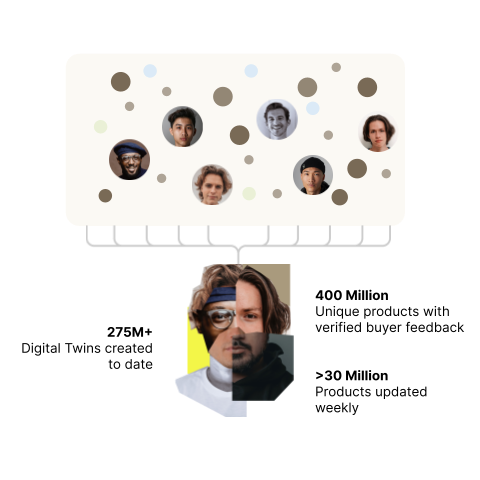Just how competitive is the beverage industry? It’s pretty hot. In fact, the beverage industry has become increasingly competitive over the years, with numerous players vying for consumer attention and loyalty. In order to stay ahead in this cutthroat environment, companies must conduct a competitive analysis of the beverage industry to identify their strengths, weaknesses, opportunities, and threats. This analysis should not only focus on direct competitors in the beverage industry but also indirect competitors such as fast food and street food vendors. For instance, competitive analysis of the fast food industry reveals significant overlap with the beverage industry, as many fast food chains offer a wide selection of drinks such as sodas, juices, and coffee.
To stay competitive, beverage companies must be aware of the strengths and weaknesses of fast food chains in relation to the beverage industry. One potential restaurant example is Starbucks, which has built its brand around its coffee products but also offers a variety of teas, juices, and other drinks. A competitive analysis of Starbucks in the beverage industry would need to consider not only the quality and diversity of its drink offerings but also its pricing, marketing, and distribution strategies.
To conduct a comprehensive competitive analysis of the beverage industry, companies should also avail themselves of industry analysis reports. After all, there’s no point in reinventing the wheel. These reports can provide a comprehensive beverage industry overview, showing the market landscape, industry trends, and key competitors in the food and beverage industry segments. With this information, beverage companies can identify gaps in the market and potential opportunities for growth. It's worth noting that indirect competitors of restaurants, such as street food vendors, can also pose a threat to the beverage industry. Street food vendors may not directly compete with beverage companies, but they offer a low-cost alternative to traditional dining options and may attract consumers who are looking for both food and drink options. As such, beverage companies must be aware of street food competitors and find ways to differentiate their offerings and appeal to a broader range of consumers.
Competitor Analysis Framework
In the food industry, conducting a competitive analysis is an essential tool for companies looking to gain insights into their market position and strategize for growth. A competitor analysis framework offers a roadmap that can guide beverage companies in running their own analysis. Within these frameworks, you will often find competitor analysis methods such as the SWOT analysis discussed above and a competitor analysis example or two. This makes these frameworks an invaluable resource for food industry players. Competition in the food industry is fierce, and it is essential to examine the various types of competition to gain a deep understanding of the market. This can include analyzing the competition in the fast food industry and understanding the fast food competitive advantage. Some of the biggest names in consulting have even created these guides. A simple search for “competitor analysis framework Mckinsey” will bring up a variety of results that you can use in your research as you build your own competitor analysis.
Competitor Analysis Tool
In the highly competitive beverage industry, it's essential for businesses to stay on top of their rivals' strategies and market positioning. Fortunately, there are a variety of powerful tools and resources available to help with effective competitor analysis. One such tool is the competitor analysis tool offered by Native AI. This tool allows companies to track their competitors' moves, identify areas of strength and weakness, and fine-tune their own approaches accordingly. Additionally, industry benchmark data can provide valuable insights into how a company is performing in comparison to other players in the market. This data can be obtained through various sources, including market research firms and industry associations. Beverage industry research can also be immensely valuable, providing insights into trends, consumer preferences, and new product development. Finally, LinkedIn benchmarks by industry can be used to determine how a company's social media metrics compare to those of its competitors. By leveraging these tools and resources, businesses in the beverage industry can stay one step ahead of their rivals, identify opportunities for growth, and make data-driven decisions that drive success.
Competitive Analysis Example Business Plan
A competitive analysis is a crucial component of a business plan, especially in the beverage industry, where competition is fierce. By conducting a competitive analysis, companies can gain valuable insights into the strategies, strengths, and weaknesses of their competitors.
One example of a successful competitive analysis in the beverage industry is the case of Starbucks, a coffeehouse chain that needs no beverage company introduction. They diversified into the tea industry with their acquisition of Teavana. Before entering the tea industry, Starbucks conducted a comprehensive competitive analysis, which revealed the potential for growth in the tea market. The analysis also provided insights into the strategies and product offerings of existing tea companies, allowing Starbucks to identify areas of opportunity for innovation and differentiation.
With this information, Starbucks formulated a strategy to acquire Teavana, a company that specializes in loose-leaf teas and tea accessories. The acquisition enabled Starbucks to expand its product offerings and tap into the growing demand for health and wellness beverages. The competitive analysis also revealed that Teavana had a loyal customer base that valued its high-quality teas and unique blends.
To build on this, Starbucks leveraged its brand recognition and marketing expertise to promote Teavana's products in its coffeehouse locations. The success of Starbucks' strategy can be attributed to the insights gained from its competitive analysis. By understanding the competition in beverage industry analysis and identifying areas of opportunity, Starbucks was able to diversify its product offerings and stay ahead of its competitors.
A competitive analysis is essential for any business plan in the beverage industry. By conducting a thorough analysis of the competition, companies can gain valuable insights that can inform their strategies and enable them to stay ahead of the competition. The case of Starbucks and Teavana demonstrates how a competitive analysis can lead to successful innovation and growth in a competitive industry.
Beverage Industry Trends
The beverage industry is constantly evolving, and 2023 is expected to see a surge in emerging trends. Some Forbes beverage industry data shows that consumers are moving towards clean and healthier beverage choices. The future of the beverage industry seems to be headed toward a shift to natural and plant-based beverages. As more consumers become aware of the health benefits of these types of beverages, the demand for sugary and carbonated drinks is expected to decline. This change in consumer preferences presents opportunities for businesses in the beverage industry to differentiate themselves by offering unique and alternative products that align with this shift in consumer behavior. The trend toward functional beverages has been growing in recent years and is predicted to continue.
Consumers are looking for drinks that not only provide taste but also offer health benefits. Beverages infused with ingredients such as probiotics, adaptogens, and vitamins are gaining momentum amongst consumers as they provide an added boost of nutrition. Businesses that can tap into the trend for functional beverages and infuse natural ingredients into their drinks will likely perform well in the marketplace. Another emerging trend in the beverage industry is the shift toward sustainable packaging. With more consumers becoming environmentally conscious, businesses that can offer eco-friendly materials and packaging for their beverages will stand out in the marketplace.
This presents an opportunity for businesses to not only differentiate themselves but also demonstrate that they are socially responsible and care about the environment. As the demand for healthier and more sustainable beverages grows, this shift will influence competition within the industry. Businesses that can adapt and stay ahead of these trends will succeed, and those that fail to adapt may be left behind.
The beverage industry has always been highly competitive, but with new trends emerging, it’s only going to become more competitive in the coming years. As the industry evolves, businesses that can identify these opportunities, adapt to shifting consumer preferences, and innovate with new products will thrive.
Competitive Analysis Assignment
Businesses today need to remain vigilant to stay ahead of the competition. Conducting a competitive analysis assignment is essential to gain insights into the level and type of competition in the beverage industry. By studying their competitors' pricing strategies, menu offerings, strengths, and weaknesses, businesses can develop effective strategies and gain a competitive advantage. For instance, fast food chains can leverage their strengths to offer a unique value proposition to customers.
Analyzing the competition also helps companies identify areas of improvement in customer service and marketing. Similarly, studying street food competitors can provide businesses with invaluable insights into local tastes and preferences. Armed with such insights, companies can develop innovative strategies to differentiate themselves and stay ahead of the game. In a crowded market like the beverage industry, staying ahead of the competition necessitates ongoing analysis, adaptation, and innovation. Ultimately, companies that commit to regular competitive analysis can leverage their strengths and gain a competitive edge in a rapidly evolving market.




